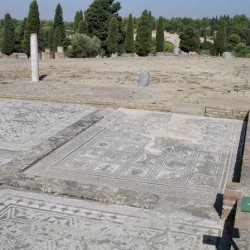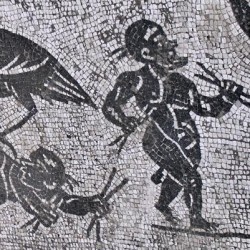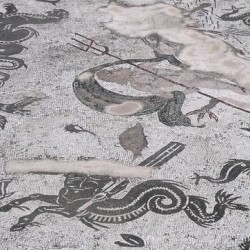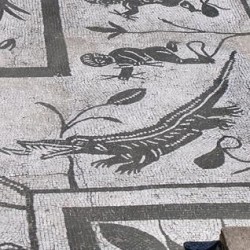Italica, House of the Neptune Mosaic
Italica: Roman colony in western Andalusia, not far from Seville. Several second-century houses have been excavated.
The site of Italica has for a substantial part been excavated. The mansions of the Hadrianic quarter, however, are the main delight of a visit to Italica.
The House of the Neptune Mosaic is named after a black-and-white mosaic with all kinds of aquatic animals. In the center is the god of the sea with his trident; this part is in color. The mosaic is surrounded by a wide edge that is decorated with Nilotic scenes. Here, you can see several crocodiles, a hippopotamus, a palm tree and several pygmies, fighting against ibises.
This indicates that the owner was interested in Egypt; admittedly, the pygmies were no residents of the country of the Nile, but the ancients believed they were living in its upper reaches, which explains their presence in an Egyptian context.
An interest in all things Egyptian was not unusual in this age. Similar scenes, although of a higher quality, can be found in the Villa Selene near Lepcis Magna in Libya. Many Romans were fascinated by the ancient country along the Nile. Italica even had a temple dedicated to the Egyptian goddess Isis. This tells something about the international culture of ancient Andalusia.
 Italica, House of the Neptune Mosaic, general view |
 Italica, House of the Neptune Mosaic, Pygmee |
 Italica, House of the Neptune Mosaic, Aquatic animals |
 Italica, House of the Neptune Mosaic, Crocodile |